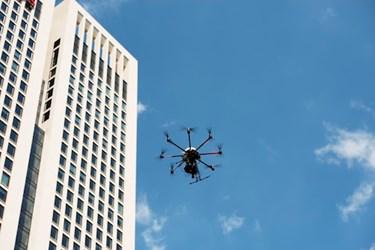Regulations For Commercial Drone Use Released By FAA

By Christine Kern, contributing writer

Regulations create new opportunities for business and government to use drones
The Department of Transportation’s Federal Aviation Administration (FAA) has announced the release of the finalized operational rules (PDF) for routine commercial use of small unmanned aircraft systems (UAS or “drones”). The move is a step towards fully integrating drones into the nation’s airspace. The new regulations are designed to promote safety of drone use while also encouraging job growth, saving lives, and advancing critical scientific research. Previously, commercial operators had to obtain a waiver from the FAA to operate small drones for commercial purposes, according to Tech Insider.
“We are part of a new era in aviation, and the potential for unmanned aircraft will make it safer and easier to do certain jobs, gather information, and deploy disaster relief,” explained U.S. Transportation Secretary Anthony Foxx. “We look forward to working with the aviation community to support innovation, while maintaining our standards as the safest and most complex airspace in the world.”
The new rules take effect in late August, and cover unmanned aircraft drones weighing less than 55 pounds, conducting non-hobbyist operations. They do not apply to major retailers like Amazon who want to use drones for delivery purposes, however. Last year, the retailer got provisional permission to use delivery drones with a host of restrictions, as Business Solutions Magazine reported.
Critics have argued federal law has lagged behind the development and proliferation of drones, particularly when it comes to safety and privacy regulation. The first FAA rules regarding small drone use were released last year, taking the first step towards the legalization of commercial drone flights in the U.S., as Business Solutions Magazine reported.
“With this new rule, we are taking a careful and deliberate approach that balances the need to deploy this new technology with the FAA’s mission to protect public safety,” said FAA Administrator Michael Huerta. “But this is just our first step. We’re already working on additional rules that will expand the range of operations.”
Drone operators must be at least 16 years old and have a remote pilot certificate with a small UAS rating or be directly supervised by someone with that certificate. Operators must keep drones within visual line of sight, and operations are allowed during daylight and twilight when the drone is equipped with anti-collision lights. The new regs also address height and speed restrictions, as well as other operational limits that look to safety.
The complete 624 page Part 107 ruleset is available here.
